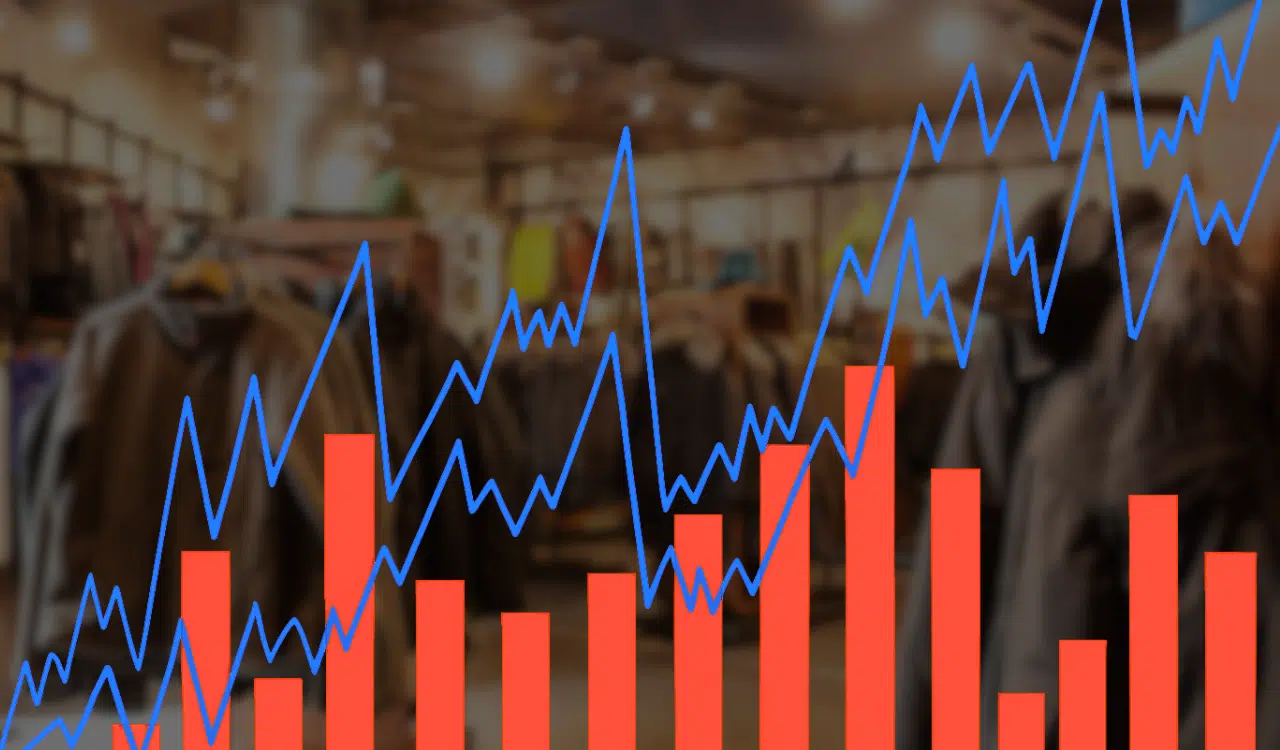Many retailers are uncomfortable, sitting on pins and needles as they anticipate the fourth-quarter holiday season. Retail has exceeded all expectations through August – total retail, including food services, is up 3.8 percent and 4.3 percent — if automobiles, the largest spending category, and gasoline stations, the most volatile, are removed. The threat of tariffs driving prices higher as the year progresses is ever-present and has everyone on edge. My TRR colleague Warren Shoulberg has weighed in on the paradox of retail growth. I’m going to focus on holiday.
Zoomers will take the lead to create more meaning in their holiday celebrations this year because they feel the weight of the modern American lifestyle more acutely than any other generation. A McKinsey health study found Gen Z has the least positive life outlook, including lower levels of emotional and social well-being and higher rates of anxiety, depression, and distress than any other generation.
Tepid Holiday Season
McKinsey reported the U.S. is “settling in for a tepid holiday season.” A significant difference between the 4,000 adult consumers polled who plan to spend less (23 percent) compared to those who plan to spend more (19 percent) over the holiday season. Many shoppers plan to favor necessity-driving purchases, e.g., food, baby and pet supplies and gasoline, with “noticeable cuts” in what they term semi-discretionary purchases, such as personal care products, vitamins and supplements, toys and household supplies.
However, the sharpest declines are reflected in discretionary categories, including travel, personal care and home improvement services, jewelry, apparel and footwear, electronics and accessories. “This underscores a broader, cautious approach to spending as economic pressures continue to shape consumer behavior,” McKinsey reports.
The report also hints at “generational shifts” impacting retail results, but unfortunately, it doesn’t go into depth about those shifts, other than to mention that millennials will be the most proactive in early holiday shopping and Gen Z the most likely to wait until Black Friday to get their holiday shopping started.
Zoomers’ hesitation to start shopping early is likely caused by the challenging economic conditions the adults in this group face. The 69 million-strong Gen Z cohort, born between 1997 and 2012 (ages 13 to 28 years), is still coming of age as consumers. However, the leading-edge Zoomer adults are advancing into their earnings prime and developing spending habits that will likely carry on into their maturity. Unfortunately, this group has been the hardest hit by the shrinkage in the job market.
Cautious frugality may be the key words to describe their current perspective, given the life-threatening pandemic crisis they faced during their developmental years and the economic upheaval that resulted from it.
Striving for Financial Security
Gen Z adults face particularly challenging financial prospects. They come burdened by significant student loan debt, uncertain job opportunities, stagnant wages and rising costs for rent, groceries and other necessities after several years of soaring inflation. As a result, nearly three-fourths of Zoomers have taken steps in the last year to improve their financial status, including making a budget (64 percent), putting more money into savings (51 percent) and paying down debt (24 percent), according to a Bank of America survey among 1,000 Gen Z adults (18 to 28 years) conducted by Ipsos. In addition, nearly two-thirds (64 percent) are taking steps to reduce spending; 41 percent have cut back on dining out, and 23 percent are shopping at more affordable grocery stores. Walmart, Aldi and Costco are reaping the rewards.
As Zoomers climb the ladder to the “good life,” the ascent keeps getting steeper with new rungs suddenly appearing. Over half (53 percent) feel they don’t make enough money to live the life they want, and a majority (55 percent) don’t have enough emergency savings to cover three months of expenses. Holly O’Neil, BOA president of consumer, retail and preferred banking, said, “Even though they’re facing economic barriers and high everyday costs, they are working hard to become financially independent and take control of their money.”
With Zoomer adults taking intentional steps toward better financial health, the McKinsey’s “State of Consumer 2025” survey among 3,000 consumers conducted in May found Gen Z adults are less likely than previous generations to focus on achieving life stage milestones, such as marriage and having children, and “much more” likely to define themselves by financial security, career achievements and accumulating wealth.
Gen Z is known for its impatience in achieving success and wants to fast-track their careers. With their current economic situation they may become more pragmatic, taking a page out of Thomas Stanley and William Danko’s book, The Millionaire Next Door: “Wealth in America is more often the result of hard work, diligent savings and living below your means.”
Monkey-Wrench In Holiday Shopping
Gen Z’s cautious frugality is playing out in PwC’s recently released holiday consumer intentions survey, which found, for the first time since 2020, Americans plan to cut back on holiday spending. Zoomers are the drivers behind the decline. Holiday spending overall is projected to decline by five percent, with gift budgets taking an even sharper hit – slashed by 11 percent, more than double the rate of the broader cutback. PwC calls it a “spending reset,” where consumers are shifting focus to cherished holiday traditions away from material gift-giving. Instead, they’re seeking deeper meaning in how they celebrate –prioritizing connection, experiences, and intentionality over excess.
“We believe people will continue to prioritize holiday rituals and meaningful experiences,” PwC reports, noting that shared experiences are gaining ground for their value, flexibility and emotional resonance. “This behavior signals a pattern: Spending may shift, but the intent to maintain a sense of normalcy holds firm.”
Gen Z Driving the Spending Reset
Looking across the four generations included in the survey sample – 1,000 each among adult Gen Z, millennials, Gen X and boomers – Zoomers are the driving force behind the spending reset. They expect to drop holiday spending by 23 percent this year.
Millennials, the next generation older than Gen Z, the largest generational cohort in the U.S., some 77 million strong, and squarely in the workforce, are more optimistic expecting to hold back planned spending by only one percent.
Cautious holiday spending by these two generations, especially for gifts, could play havoc on retailers’ fourth-quarter results. Overall, the PwC survey found that more than 80 percent of the consumers surveyed across all generations plan to cut back on spending over the next six months, citing rising prices, new tariffs, and the higher cost of living.
Time for a Change
Net/net: Retailers can expect shoppers to be looking to economize more when selecting gifts this year. Yet, the most meaningful gifts don’t necessarily come from a store, but from the heart. A handwritten letter, a shared memory captured in a photograph or a handmade item crafted with love carries more meaning. And the greatest gift of all is simply to spend time together – engaging in family traditions or creating new ones that deepen connection and joy.
Zoomers will take the lead to create more meaning in their holiday celebrations this year because they feel the weight of the modern American lifestyle more acutely than any other generation. A McKinsey health study found Gen Z have the least positive life outlook, including lower levels of emotional and social well-being and higher rates of anxiety, depression, and distress than any other generation. Imagine the irony: Gen Z may be the ones to lead the way to more meaningful holiday celebrations this year, governed by financial discipline and cautious spending. And the spending habits they are developing in their formative years are likely to be carried on as they mature.
In the short term, this shift may unsettle retailers and consumer brands. But Gen Z is still emerging as a consumer force. Of the roughly 69 million Zoomers in the U.S., only about 45 million have reached adulthood. They account for about 25 percent of the population, but currently only around 15 percent of spending. This gives brands a window of opportunity to understand their values and evolve accordingly.
While it is impossible to predict exactly how Gen Z will reshape the marketplace, once they take center stage, one thing is certain: they will bring profound change. The question isn’t if, but when. And smart brands must be preparing now.





